Rock and Roll
One bright fall morning, I notice that the noise level at Under the Gingko Tree is exceptionally low. A quick glance around reassures me that all of my early learners are safe and accounted for. Then I notice a quiet but intense play buzz happening in our rain garden, so I wander over to see what has captured the children’s unwavering attention for so long.
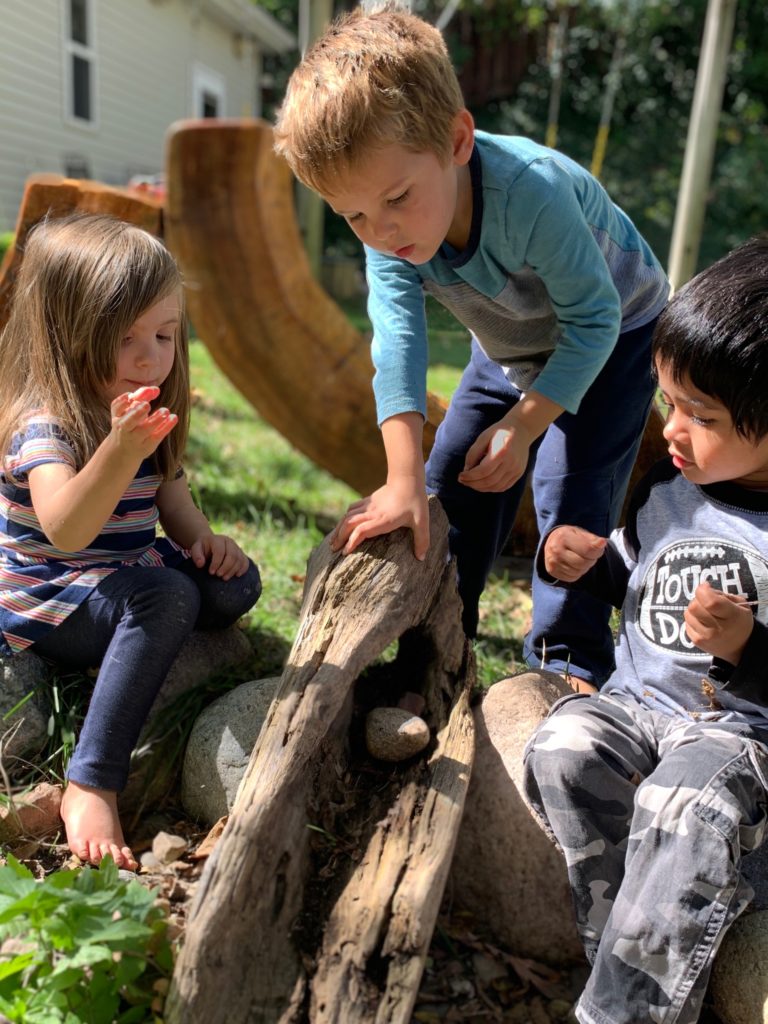
“See? We are using the log to make our hill!” Jameson explains to me.
“We are rolling the rocks down the hill, but our hill has a tunnel!” giggles Noa.
“They go in and then they roll down!” two-year-old Tariq tells me, trying to keep pace with his older friends.
“This rock is flat on this side. It won’t roll, just like Ricky!” Jameson reminds me.
The rocks in the rain garden and a hollow log have triggered an idea from another one of our favorite books: Ricky, the Rock That Couldn’t Roll.
Ricky is a flat rock that can’t roll with his friends on their favorite hill. Ricky’s friends help him overcome his challenge and find a way for Ricky to play like everyone else.
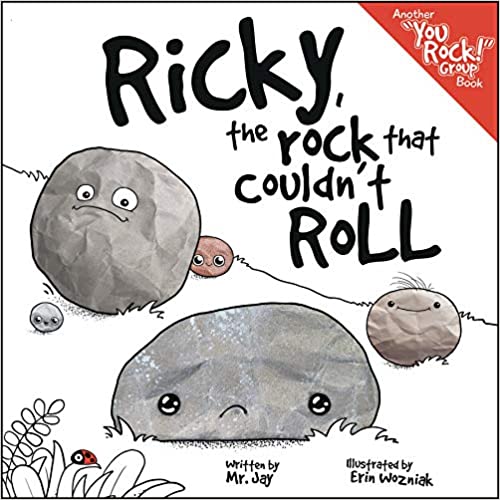
Suddenly we have piles of rocks that have the same names and characteristics as the rocks in the book. I love it when an idea takes hold and inspires creativity and collaboration as the children begin to plan an activity on their own.
We have a STEM morning unfolding in our outdoor classroom! When the children start using words like “in,” “down,” “over,” “under” and “next to,” they are laying the foundation for geometry. Oh, this is going to be a fun morning!

As I watch the children design and develop models that represent their ideas, I think to myself, “This is what early math and science learning looks like.” Planning and carrying out simple investigations like this one will make your assessment nightmare seem like a dream. Math and science overlap so much in this morning’s quest for understanding. This is the kind of play that hones children’s problem-solving skills and enables them to meet important early learning milestones.
I see the young friends sorting and classifying piles of rocks—grouping the flat rocks together and then creating another classification for the rocks that will fit into the tunnel. I observe and listen as they demonstrate their comprehension of the sorting and classifying process by comparing and sharing descriptions. When children use words such as “short,” “wide,” “heavy” and “light,” they are using descriptors for measurement. When they are guessing, predicting, classifying and putting rocks in a specific order, they are engaging in early algebra.
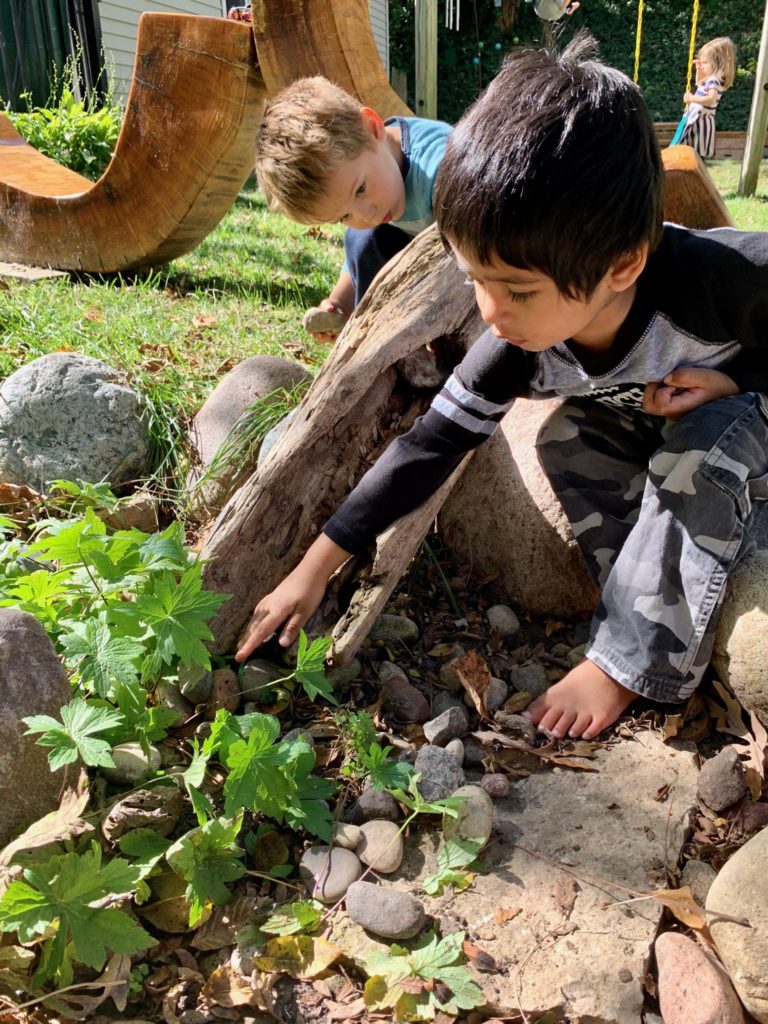
By making predictions, changing designs and collecting data for their next rock, the children are building the foundation for more advanced learning in data analysis and probability in the years to come.
“I think there is something blocking it in there….” Jameson’s voice trails off as he inspects a rock more closely to see why it didn’t tumble in the way that he had expected. He has observed that the rock is encountering some resistance. This is friction!
This is how we lay the foundation of early science through childhood investigation and teamwork. Today, the children are learning about persistence and problem-solving, propelled by the simple but profound joy of creative play.
Now the children are discussing another STEM concept. “Should we flip the log on its other side or move it to a higher rock?” Jameson asks.
I introduce the vocabulary word for their latest STEM adventure: “elevation.”
“Like an elevator! It goes up to the top of the building!” Jameson declares.
I smile. It’s like throwing seeds into the wind. I never know which ones will land on a rock or take root in a little brain. Either way, this is learning through play. Changing the height (elevation) to get a faster roll is working with speed!
The children are also exhibiting a developing sense of spatial awareness as they work out where and in what direction the log should be placed.
“Maybe if we push it, it will go faster!” Sarah suggests.
When you are working on those early learning standards, listen to the words that your students are using. When Sarah uses the word “push,” this is a change that leads to an action. The outcome of that action is an effect!
This is scientific investigation in progress. Words like “push,” “pull,” “launch” and “force” are all science action words.
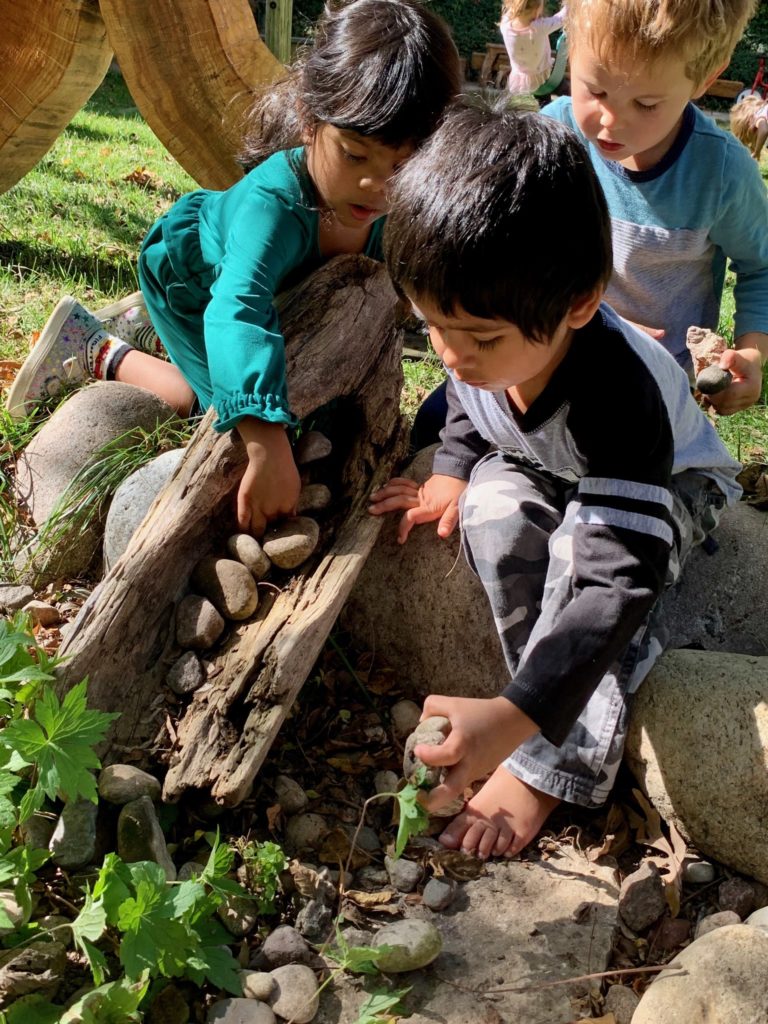
Ricky—the rock that started this play—is long forgotten. We have naturally moved on to racing our rocks down the tunnel. I am not sure that any child actually remembers which rock is “theirs,” but they know which rock came in first, second, third and last. These are the vocabulary words that tell us that the children are mastering rudimentary skills in numbers and operations. This is a morning of assessment magic!
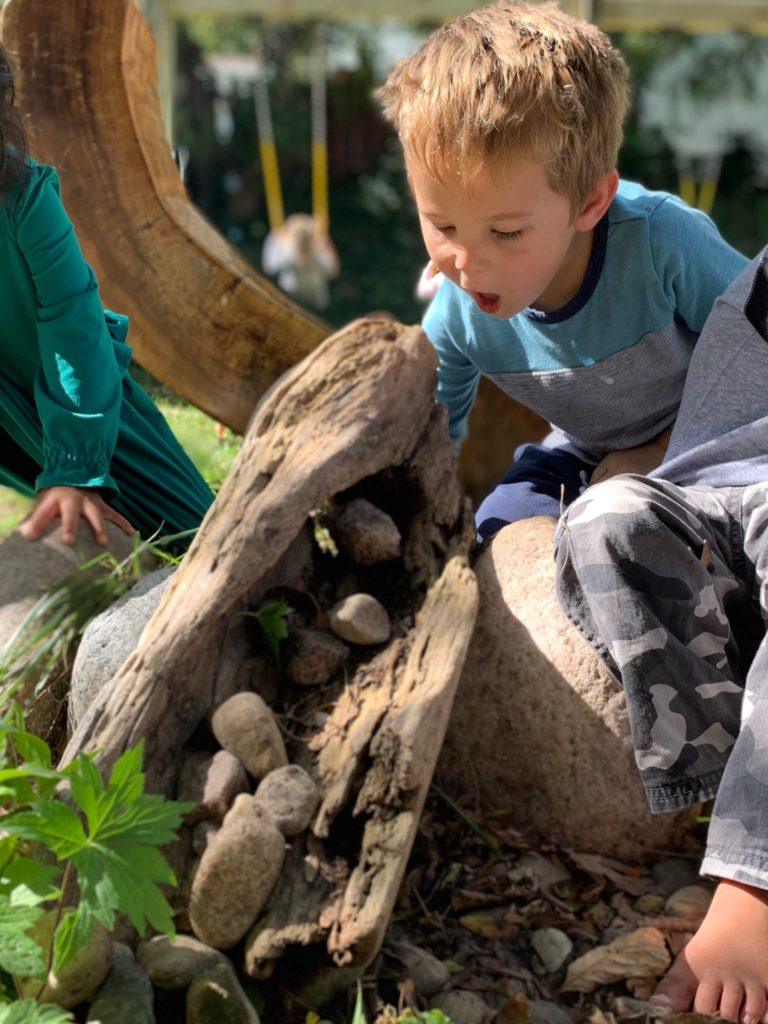
If you have ramps in your classroom, or this is the type of play that sparks your energy, try reading the book, Ricky, the Rock That Couldn’t Roll, aloud to the children. Then place some rocks that roll, along with rocks that don’t roll, in your block area. Observe the investigations that take place and check off some early learning standards of your own!
Happy November, my friends. Stay safe and keep playing!
rock & roll and nature collection a good source of learning matereals.
rock & roll
rock & roll teaching the mythic of adding on.
I love how the rocks rolling and not rolling help the children to work on their observation skills also
I like how the children can count all the rocks that are there, add them or subtract them.
Excellent lesson for children to explore a variety of spatial concepts
I love seeing how “Kids learn through play” so many people just see kids playing with dirt and leaves and rocks and being messy, they don’t Listen and see the kids discussing and understanding concepts!!
We only have tiny rocks in our playground, but my tots love grouping them or putting them in buckets to shake around. <3
I love using nature to learn math concepts.
I LOVE, LOVE, LOVE this child initiated outdoor activity!! Their facial expressions really show how they are concentrating and thinking about so many different math related concepts!! I bet this brought a lot of joy to the teacher to see this happening!!
So exciting to see children using nature to explore math. Sometimes it takes guidance, but many times, children are very capable of creating their own conversations and learning opportunities.
It is great to see kids outside and learning with such simple supplies..nothing had to be bought. Just using natural items to learn about science and math, among other things.
I think this is a great activity for spacial awareness, children love outdoors and rocks.
I love al the vocabulary used when you collected data.
Like this activity and how it’s a natural environment plus a very good learning session